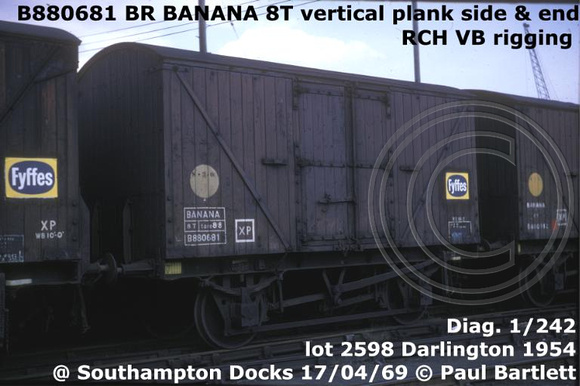Yet another possibility, Roger. We know that if one was really lucky, right place, right time, some extraordinary and very unlikely workings could be seen in the late 50s or early to mid 60s. (That's
1950s -
1960s, not
1850s for the sake of clarification). Trains Illustrated was really good at detailing such unusual workings. Nowadays everything looks the same so such experiences are not possible. (Ducks behind a parapet and hides).
Rapidly moving on.

I've just noticed that the picture of Alcazar shows an A1 with no electric head lamps. On checking back through Tim's photos I can't find another, although I've not examined every single photo. Was Alcazar unique?
Royal Scot 46144 Honorable Artillery Company on arrival at Euston on 5th August 1961. By now a Willesden engine, confirmed by the 1A shed plate, it went to Llandudno Junction in September 1961 and finally Crewe North in July 1963 where it was withdrawn in January 1964. (SLS). It went in to Crewe Works to be scrapped which was completed by the end of January. (Rail UK).

Double heading Black Fives 44874 and 45222 on a down Manchester and Colne train at Kilburn High Road on 5th August 1961. Seen previously in post #2658 44874 had been a Carnforth engine since October 1950, then Stoke from August 1961 and back to Carnforth in September 1961 and was withdrawn at the end of main line steam in August 1968. (SLS). It went to Draper's at Hull and was scrapped by the end of March 1969. (Rail UK).
45222 was allocated to Willesden in December 1960, moved to Rugby in September 1961, then Rugby in September 1961 followed by Bletchley, Bescot, Banbury, Colwick and then Newton Heath in November 1966 where it was withdrawn in February 1967. (SLS). Drapers of Hull did the deed which was completed by the end of July 1967. (Rail UK).

An unidentified A3 leaving Kings Cross on 5th August 1961.
The unidentified A3 can be narrowed down a bit. It looks very much like a dia 107 boiler and an obvious GN tender which reduces the possibilities to 10, and if one discounts the ScR allocated ones and the outlying ER one, eg Ardsley, then it comes down to probably one of 6.
60052 Prince Palatine Darlington, 60054 Prince of Wales Grantham, 60066 Merry Hampton Kings X, 60075 St Frusquin Heaton, 60083 Neil Gow Heaton, 60112 St Simon Grantham. Of these I would suggest either the Kings X or Grantham locos might be first choice but beyond that a pure guess.
Only one engine meets the other criteria, 60112.
A3 60112 St Simon has been seen a long while ago, in post #821. It had been a Grantham engine since July 1959, moving to Doncaster in October 1963 and New England in November the same year where it was withdrawn in December 1964. (SLS). It was scrapped at A King & Sons, Norwich, by the end of February 1965. (Rail UK).

V2 60825 and A3 60061 Pretty Polly backing in to Kings Cross on 5th August 1961. That coal on the tender of the A3 looks a bit high! I'm doubtful about the identification of the V2 because 60825 was allocated to St Margarets at the time of the photo and was withdrawn from there in April 1964. It was then recorded at Dundee Tay Bridge in May 1964 so probably in storage (SLS) but probably not the loco we have here.
60061 Pretty Polly was seen last in post #1954. It was a Kings Cross engine in November 1959 but moved to Grantham in June 1963 and was withdrawn in October. It had received trough deflectors in February 1962. (SLS). It was scrapped in October at Doncaster Works. The Railway Observer report it as being in the works yard on 6th October 1963.

Here's 60061 again on the 12.55 to Wakefield from Kings Cross on 5th August 1961.

A1 60136 Alcazar again, but here backing out of Kings Cross on 5th August 1961. See post #2804 above for details

Brian

























